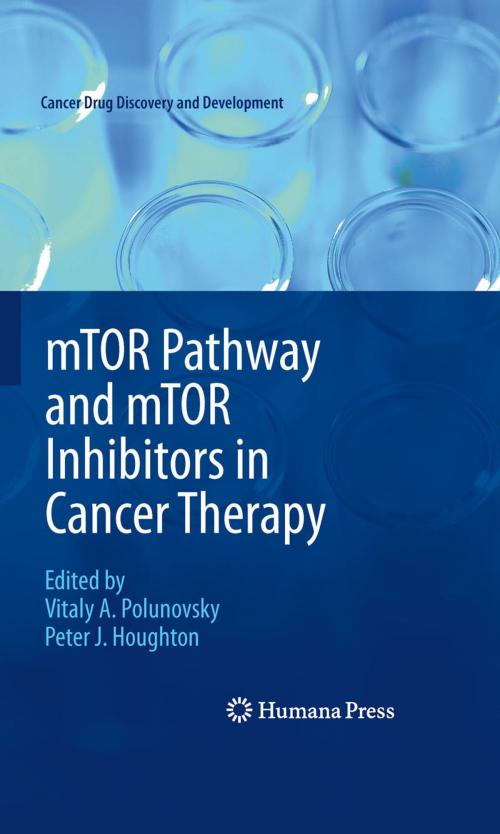mTOR Pathway and mTOR Inhibitors in Cancer Therapy
Nonfiction, Science & Nature, Science, Other Sciences, Molecular Biology, Health & Well Being, Medical, Specialties, Oncology| Author: | ISBN: | 9781603272711 | |
| Publisher: | Humana Press | Publication: | July 23, 2010 |
| Imprint: | Humana | Language: | English |
| Author: | |
| ISBN: | 9781603272711 |
| Publisher: | Humana Press |
| Publication: | July 23, 2010 |
| Imprint: | Humana |
| Language: | English |
The main objective of this book is to provide an up-to-date survey of the rapidly advancing eld of cancer therapy. Moreover, since our knowledge in this area rapidly evolves, some data have got obsolete during the process of book editing. Our understanding of the mechanisms involved in cancer genesis and progression underwent unprecedented expansion during the last decade, opening a new era of cancer treatment – targeted therapy. The surge in this area results in no small part from studies conducted jointly by basic health scientists and clinical investigators. It is our hope that this book will help foster even further collaboration between investigators in these two disciplines. The target of rapamycin (TOR) was rst identi ed in Saccharomyces cerevisiae and subsequently in mammals (mTOR) as a conserved atypical serine/threonine kinase. In mammalian cells, mTOR exists in at least two multi-protein complexes that have critical roles in regulating cellular homeostasis and survival. As with many other areas of science, discovery of TOR signaling was fortuitous. Rapamycin was isolated as a product of the soil bacteria Streptomyces hygroscopicus, identi ed in a soil sample taken from the island of Rapa Nui (Easter Island). Rapamycin was rst discovered to be a potent antifungal agent and next as an immune suppressive drug. It was only later that it was found to be active as an antitumor agent in non-clinical models; although it was not developed for this indication. The history of rapamycin presents one of the rst examples of chemical genetics.
The main objective of this book is to provide an up-to-date survey of the rapidly advancing eld of cancer therapy. Moreover, since our knowledge in this area rapidly evolves, some data have got obsolete during the process of book editing. Our understanding of the mechanisms involved in cancer genesis and progression underwent unprecedented expansion during the last decade, opening a new era of cancer treatment – targeted therapy. The surge in this area results in no small part from studies conducted jointly by basic health scientists and clinical investigators. It is our hope that this book will help foster even further collaboration between investigators in these two disciplines. The target of rapamycin (TOR) was rst identi ed in Saccharomyces cerevisiae and subsequently in mammals (mTOR) as a conserved atypical serine/threonine kinase. In mammalian cells, mTOR exists in at least two multi-protein complexes that have critical roles in regulating cellular homeostasis and survival. As with many other areas of science, discovery of TOR signaling was fortuitous. Rapamycin was isolated as a product of the soil bacteria Streptomyces hygroscopicus, identi ed in a soil sample taken from the island of Rapa Nui (Easter Island). Rapamycin was rst discovered to be a potent antifungal agent and next as an immune suppressive drug. It was only later that it was found to be active as an antitumor agent in non-clinical models; although it was not developed for this indication. The history of rapamycin presents one of the rst examples of chemical genetics.















